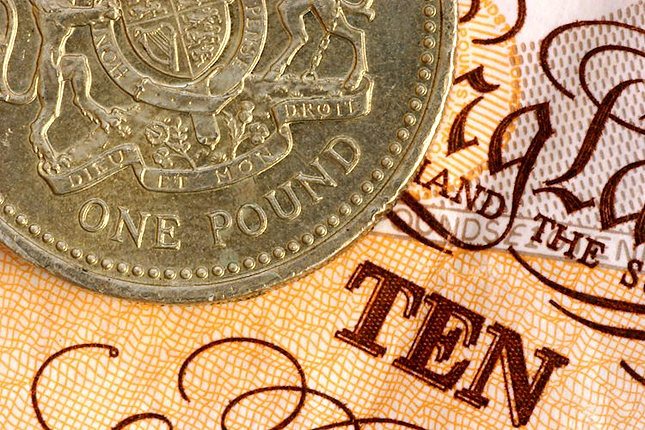Markets
Friday’s payrolls were better than expected on face value. It caused yields to temporarily jump after already trending higher throughout the day. As markets digested the report, evidence of a labor market cooling emerged. The sharp and contrasting drop in employment measured by the household survey, for one, could be a reason for caution. The same goes for an unexpected decline in the participation rate. Either way, combined with a disappointing US services ISM later, yields even spiked in the opposite direction. The December headline number retreated from 52.7 to 50.6, signaling an only minor expansion. While prices paid stayed at a fairly high 57.4, new orders unexpectedly dropped from 55.5 to 52.8. Together with the employment series falling off a cliff into contraction territory (from 50.7 to 43.3) it could spell trouble ahead. But in what is possibly testament to markets’ new reaction function after having discounted more than enough monetary easing, yields recovered from the dip lower. Fed’s Lorie Logan hinted the debate on slowing QT (currently $95bn/month) may start in the near term but that didn’t stop the intraday comeback either. US yields eventually finished between flat (2-y) and 5 bps (30-y) higher. German yields partially missed out on the US recovery but nonetheless rose 2.6-3.8 bps across the curve. The US dollar whipsawed but in the end it’s as both the payrolls and ISM report never were released. EUR/USD finished unchanged at 1.094. DXY held steady at 102.41 and USD/JPY close to but below 145. Sterling outperformed global peers, sending EUR/GBP further lower towards the 0.86 big figure. European equities pared 1%+ losses to 0.2% and Wall Street finished a poor week on slightly positive footing. It offers little respite to Asian stocks though. Many of them trade in the red, especially in China and Hong Kong. Today’s economic calendar offers little to guide markets. The European Commission’s economic confidence indicator is due and Fed’s Bostic addresses the economic outlook. US CPI on Thursday marks this week’s apex with speeches from Fed’s Williams and ECB’s Lane, Schnabel and Villeroy scattered across the week worth mentioning as well. For today we expect technical trading to take hold. We stick to the view that markets have priced in too much Fed and ECB easing and a countermove may be in the process of materializing. The US 10-y yield finishing last week above 4% is a technical win. Next resistance is located around 4.08% which marked the upper bound of a sideways trading range that dominated the first half of 2023. Taking out 4.25% would further substantially improve the picture. Germany’s 10-y is looking at first resistance around 2.20%. EUR/USD’s short term fate is confined to a narrow 1.09/1.10 trading range.
News and views
KPMG and REC published their latest Report on Jobs survey. Especially permanent placements, but also temp billings declined again in December, though at softer rates than in November. Weak economic demand weighs on hiring decisions. Overall vacancies fell slightly for the third time in the past four months. Candidate availability continued to rise at rapid levels with redundancies and a slowdown in hiring pushing up labour supply. Hotel & Catering saw by far the steepest increase in short-term vacancies. The Construction and Retail categories meanwhile recorded the sharpest declines in demand for temporary workers. The rate of starting salary inflation picked up from November and was sharp overall though nevertheless the second-slowest since March 2021.
Czech National Bank vice-governor Zamrazilova said yesterday that the CNB could stick with small 25 bps policy rate decreases if the decline towards inflation is slower that it thinks. If it falls faster, she argues to sometimes make a more significant lowering. The CNB conducted an inaugural 25 bps rate cut at its final policy meeting of 2023 (6% to 5.75%). Minutes of that meeting last Friday showed some internal divergence of the pace of rate cuts. Zamrazilova added that the risk of wage-price spiral occurring in the near future has probably decreased further with the likelihood of stronger-than-expected repricing in January being fairly low. Czech public finances on the other hand represent a long-term inflationary risk.
This non-exhaustive information is based on short-term forecasts for expected developments on the financial markets. KBC Bank cannot guarantee that these forecasts will materialize and cannot be held liable in any way for direct or consequential loss arising from any use of this document or its content. The document is not intended as personalized investment advice and does not constitute a recommendation to buy, sell or hold investments described herein. Although information has been obtained from and is based upon sources KBC believes to be reliable, KBC does not guarantee the accuracy of this information, which may be incomplete or condensed. All opinions and estimates constitute a KBC judgment as of the data of the report and are subject to change without notice.
Recommended Content
Editors’ Picks

US PCE matched consensus in October – LIVE
The U.S. Department of Commerce announced that annual headline Personal Consumption Expenditures (PCE) inflation climbed to 2.3% in October, with core PCE inflation—a key measure excluding food and energy—rising slightly higher at 2.8% over the same period.

EUR/USD retreats from tops post-US PCE, back near 1.0540
The bearish sentiment in the US Dollar remains in place and supports EUR/USD's constructive outlook, keeping it in the 1.0540 region after the release of US inflation data, as measured by the PCE, on Wednesday.

GBP/USD recedes to 1.2640 on US PCE data
GBP/USD remains positively oriented in the 1.2640 zone as the Greenback experiences a marked pullback following the PCE inflation release.

Gold remains sidelined near $2,640 following US inflation prints
Gold remains on the positive foot near $2,640 per troy ounce, as US inflation data matched initial estimates in October, while US yields display a negative performance across the curve.

Eurozone PMI sounds the alarm about growth once more
The composite PMI dropped from 50 to 48.1, once more stressing growth concerns for the eurozone. Hard data has actually come in better than expected recently – so ahead of the December meeting, the ECB has to figure out whether this is the PMI crying wolf or whether it should take this signal seriously. We think it’s the latter.

Best Forex Brokers with Low Spreads
VERIFIED Low spreads are crucial for reducing trading costs. Explore top Forex brokers offering competitive spreads and high leverage. Compare options for EUR/USD, GBP/USD, USD/JPY, and Gold.